
This article is part of a series called ‘Christianity: a missionary religion.’ As I said in the introduction to the series:
Mostly, I’ll look at recently published books. It is encouraging to see that, while most churches and Christian bookstores have largely forgotten missionaries, a few publishers continue to produce some fascinating books.
Some are devotional; some are aimed at the Christian public. But many have an academic focus, both from within the Christian community and from secular publishers.
No longer do we see much in the way of hagiography (probably a sign of maturity) and many are critical of the missionary movement. But they do take it seriously.
It probably goes without saying that I will just scratch the surface of each topic (at times simply quoting from the publishers) – but I do hope people will go on to read some of the books, which are of high quality.
The series:
• Introduction
1. History of Missions
2. State of World Christianity
3. Specific Areas: Africa
4. Specific Areas: Asia
5. Specific Areas: Latin America
6. Not So Good News
7. New Approaches to Missions
8. Women
9. Specific Areas: Asia
IX. Asia
In an accompanying comment this week, John Hall makes the important, and timely, point that mission does not need to be the work of a missionary, nor does it need to be done away from home.
Absolutely true, but we do have a rich missionary history, which has allowed the gospel to spread around the world – to the extent that the centre of World Christianity is now in Africa, Asia and Latin America, the adopted homes where Western missionaries served – and often died. Many of those nations are now sending thousands of missionaries to other nations themselves.
Here are some recent books which look at how missionaries have influenced Asia, and how their missionaries are influencing others.
- Jonathan A. Seitz: Protestant Missionaries in China: Robert Morrison and Early Sinology (University of Notre Dame Press, 2024)
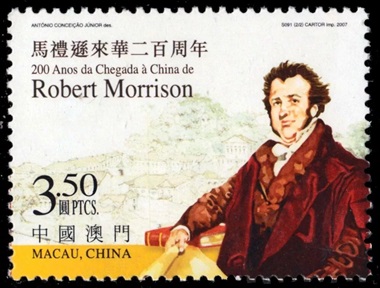
Macau, a special administrative region of China, produced this stamp in 2007.
With a focus on Robert Morrison, Protestant Missionaries in China evaluates the role of 19th century British missionaries in the early development of the cross-cultural relationship between China and the English-speaking world.
As one of the first generation of British Protestant missionaries, Robert Morrison went to China in 1807 with the goal of evangelizing the country.
It is particularly interesting to note that Morrison was not in China as an instrument of empire.
Seitz writes:
Unlike the earlier Catholic encounter that place missionaries in the Qing court, the first Protestant encounter was peripheral to the empire itself.
Protestant missionaries operated on the margins, working primarily among Chinese who sought education and contact with foreigners. When they approached the court and refused to bow, they were turned away.
In their evangelistic work, they hoped to avoid capture or punishment and to advance their work for the conversion of the hundreds of millions in China.
His mission pushed him into deeper engagement with Chinese language and culture, and the exchange flowed both ways as Morrison – a working-class man whose firsthand experiences made him an ‘accidental expert’ – brought depictions of China back to eager British audiences.
Jonathan A. Seitz, an Associate Professor at Taiwan Graduate School of Theology, proposes that, despite the limitations imposed by the orientalism impulse of the era, Morrison and his fellow missionaries were instrumental in creating a new map of cross-cultural engagement that would evolve, ultimately, into modern sinology, the study of Chinese language, history, customs and politics.
Engaging and well researched, Protestant Missionaries in China explores the impact of Morrison and his contemporaries on early sinology, mission work and Chinese Christianity during the three decades before the start of the Opium Wars.
Go here for Byung Ho Choi’s interview with Jonathan Seitz on the World Christianity Podcast Channel on New Books Network.
- Glen L. Thompson: Jingjiao: The Earliest Christian Church in China (Eerdmans Publishing, 2024)
 Many people assume that the first introduction of Christianity to the Chinese was part of 19th century Western imperialism. In fact, Syriac-speaking Christians brought the gospel along the Silk Road into China in the 7th century.
Many people assume that the first introduction of Christianity to the Chinese was part of 19th century Western imperialism. In fact, Syriac-speaking Christians brought the gospel along the Silk Road into China in the 7th century.
Glen Thompson, Professor Emeritus of New Testament and Historical Theology at Asia Lutheran Seminary in Hong Kong, introduces readers to the fascinating history of this early Eastern church, referred to as Jingjiao, or the “Luminous Teaching.”
Thompson presents the history of the Persian church’s mission to China with rigor and clarity. While Christianity remained a minor and ‘foreign’ religion in the Middle Kingdom, it nonetheless attracted adherents among indigenous Chinese and received imperial approval during the Tang Dynasty.
Though it was later suppressed alongside Buddhism, it resurfaced in China and Mongolia in the 12th century.
Thompson also discusses how the modern unearthing of Chinese Christian texts has stirred controversy over the meaning of Jingjiao to recent missionary efforts in China.
In an accessible style, Thompson guides readers through primary sources as well as up-to-date scholarship. As the most recent and balanced survey on the topic available in English, Jingjiao will be an indispensable resource for students of global Christianity and missiology.
There is a good, detailed review of Jingjiao by Robert D. Cornwall on Word & Way.
- Adam Yuet Chau: Religion in China (Polity Press, 2019)
Religion in China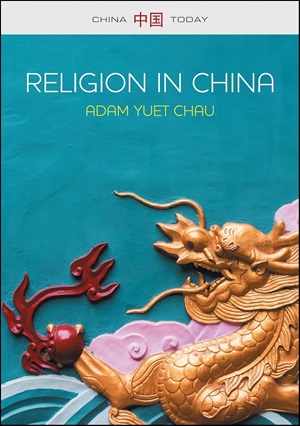 covers far more than missions – in fact covers the full range of religious expression in China – but the author does comment both on the Western missionary movement and on more recent efforts to spread the gospel both within China and around the world.
covers far more than missions – in fact covers the full range of religious expression in China – but the author does comment both on the Western missionary movement and on more recent efforts to spread the gospel both within China and around the world.
He writes:
Western missionaries were allowed into China again as a result of the Nanking Treaty after the conclusion of the First Opium War in 1842 . . .
Compared to the earlier Catholic missionaries, the Protestant missionaries were far more successful in this new era in converting the Chinese to Christianity. Thousand of churches and congregations were founded all over China.
In the early 20th century many indigenous Chinese churches emerged as well, some being explicitly against Western missionary domination and divisive denominationalism. . .
The Catholics and Protestants in today’s China are increasingly linked up to global Christian networks. . . . Though proselytizing by foreigners is still illegal, it has not stopped tens of thousands of South Koreans and young Christians from other countries from coming into China to spread the gospel. . . .
There are even particularly ambitious Chinese churches that send missionaries to Central and South Asia and the Middle East and attempt to convert Muslims, Hindus and Buddhists to Christianity (e.g. the Back to Jerusalem Movement).
Adam Yuet Chau is University Lecturer in the Anthropology of Modern China in the Department of East Asian Studies at the University of Cambridge, UK.
- Chloë Starr, editor & translator: A Reader in Chinese Theology (Baylor University Press, 2022)
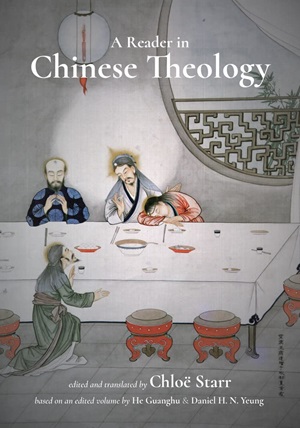 Chloë Starr, Professor of Asian Theology and Christianity at Yale Divinity School, provides English readers with a wealth of diverse writings in A Reader in Chinese Theology.
Chloë Starr, Professor of Asian Theology and Christianity at Yale Divinity School, provides English readers with a wealth of diverse writings in A Reader in Chinese Theology.
One entry by Cao Shengjie covers ‘Mission in the Chinese Church.’ She is a theologian and church leader within the state-approved Three-Self Patriotic Movement. Here is a portion of her conclusion:
Chinese mission work is the responsibility of our Chinese church. To conscientiously carry out the Lord’s commission in our own context, we must do the following:
-
- . . . The CCC/TSPM (China Christian Council / Three-Self Patriotic Movement) must study how to organize and train personnel in the use of methods appropriate to our national ethos with the goal of further improving work on two fronts: evangelism and pastoral care for believers, thus addressing the sometimes chaotic situation that exists within the church.
- The church spreads the gospel, but not only this: emphasis should also be given to witnessing to the gospel. . . .
- Conscientious respect for the religious freedom of those who do not believe in religion and those who believe in other religions, praying for them, helping them to understand Christianity. . . .
- Among Christians, we must work to eliminate the sort of harmful theological thinking that stresses that believers must be “separated from,” “isolated from,” even “opposed to” non-believers in the life of this world. We want to both spread the gospel and at the same time to advocate harmony among people and cooperation in doing good. For if we do not have a foundation of unity in these matters, we cannot be successful in the work of evangelism either.
Ecumenical in scope, A Reader in Chinese Theology offers a variety of sources: early Church of the East texts; Roman Catholic writings from the Ming and Qing; singular Taiping treatises; 20th century Protestant writings across the church spectrum; and an assortment of academic essays showcasing ‘Sino-Christian theology’ from the Reform Era (following 1978).
The 35 entries range from Matteo Ricci (True Meaning of the Lord of Heaven) to Ma Xiango (Letter to the Pope, Requesting the Establishment of a Chinese Academy, 1912) to Ni Tuosheng / Watchman Nee (The Spiritual Man) and ZhI Lin (The ‘Four Incipient Virtues’ in Confucianism and Christian ‘Original Sin’).
- Bong Rin Ro: Asian Church History (Kingdom Books, 2024)

Bong Rin Ro signing his book at the Lausanne 4 Congress in Korea in late September at the Arise Asia booth (photo from their Facebook page).
While Christianity has declined in Europe and North America, rapid church growth has occurred in the Global South, including Asia. In the 1980s and 1990s, the Christian church in China rapidly grew to about 100 million Christians.
Other countries in Southeast Asia experienced rapid church growth: the Roman Catholic nation (82.9%) of the Philippines, with the Protestants (10%); Singapore (17%); and Indonesia (15.8%).
Asian churches are now sending out their own missionaries: India (30,000); Korea (26,000); Singapore (2,000); the Philippines (600); Japan (520); Taiwan (560); Hong Kong (500); China (500 – 1,000); and even Thailand (60).
Bong Rin Ro was at the Lausanne 4 Congress in Korea earlier this fall. I was fortunate enough to have him sign the copy of Asian Church History I bought at the Arise Asia booth.
Though he is particularly enthusiastic about the dynamic Asian church and mission movement, he does acknowledge and give credit throughout the book to Western missionaries and their influence.
For example:
- Education: “The traditional educational system in Asia was basically for the children of the elite aristocratic class , , , Missionaries brought modern education to Asia and revolutionized the educational system of most Asian nations.
- Adoniram Judson: “Many Christians may consider his missionary work a failure, but he became the ‘spiritual father’ of six million Christians in Burma.”
Bong Rin Ro, born in North Korea, is founding leader and former Executive Secretary of the Asia Theological Association and former Dean of the Asia Graduate School of Theology.
- Reg Reimer: On the Cruel Edges of the World: A Memoir of Carrying Help and Hope into Dark Places in Dangerous Times (independently published, 2024)
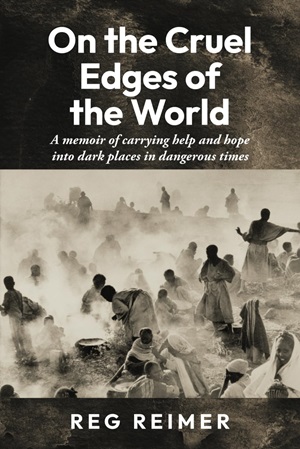 Now living in the Fraser Valley, Reg Reimer has led a colourful life in many nations around the world, particularly Vietnam, Thailand and Southeast Asia in general.
Now living in the Fraser Valley, Reg Reimer has led a colourful life in many nations around the world, particularly Vietnam, Thailand and Southeast Asia in general.
A missionary vocation set the stage for an extraordinary life of service for Reg Reimer. It required him to be by turns an evangelist, a professor, a first responder, a church planter, a chief executive, a writer, a development worker, a peacemaker, an advocate and a spy!
It took him into the suffering caused by the major man-made and natural disasters of our time – in the Vietnam War, the Cambodian and the Rwanda genocides, the African famines, the Great Asian Tsunami.
There he partnered with the compassionate God in lifting up the destitute, the downtrodden and the persecuted, making their way “as best they could on the cruel edges of the world” (Hebrews 11: 38 The Message).
These experiences led him to reflect deeply on human evil and human suffering, alongside the goodness and mercy of God.
I love the way the book starts out – not least because it aligns so well with the purpose of this series (‘Christianity: a Missionary Religion’):
When seatmate strangers on my many overseas flights ask me what I do, I could parse my reply with a dozen different secular terms given my eclectic international career. However, I enjoy coming flat out with my main vocation, the charged term of ‘missionary.’
More to come about On the Cruel Edges of the World early next year.
- José Casanova & Peter C. Phan, Editors: Asian Pacific Catholicism and Globalization: Historical Perspectives and Contemporary Challenges (Georgetown University Press, 2023)
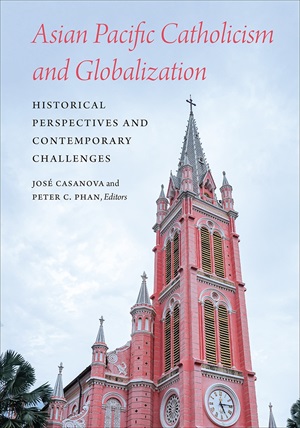 Since the 16th century, Catholicism has contributed significantly to global connectivity. Except for the Philippines and Timor-Leste, Catholicism in Asia is, and is likely to remain, a minority religion. For this reason, it can serve as a unique prism through which to look at the processes of globalization in Asia.
Since the 16th century, Catholicism has contributed significantly to global connectivity. Except for the Philippines and Timor-Leste, Catholicism in Asia is, and is likely to remain, a minority religion. For this reason, it can serve as a unique prism through which to look at the processes of globalization in Asia.
Missions are not central to the work, though their significance is addressed:
The editors of Asian Pacific Catholicism and Globalization identify three distinct phases in the development of Catholicism in Asia and Oceania:
- early modern (16th – 18th centuries): “The early modern phase of globalization, initiated by Iberian colonial expansion, was also the golden age of global Catholic missions. Catholic missionaries, most preeminently the Jesuits, served as pioneer globalizers and primary cultural brokers between East and West and between North and South, making in the process significant contributions to the growth in global connectivity and global consciousness.”
- modern Western hegemony (1780s – 1960s): “The time period was marked by a new wave of Western hegemonic colonial expansion over the entire globe. . . . [It] also witnessed the golden age of Protestant Christian missions, accompanying first the British, then the American global imperial expansions. Throughout the 19th century there was also a renewed expansion of Catholic missions throughout Asian and the Pacific . . .”
- contemporary (1960s – present): “It is no longer constituted by a Western center with multiple non-Western radiating peripheries, but by multiple centers and peripheries. We have entered a new phase of globalization after Western hegemony, where the globe is assuming the shape of a polyhedron, an image frequently used by Pope Francis.”
The book’s contributors discuss the development of Catholicism in all the major countries of the region, including China, Japan, South Korea, the Philippines, Vietnam, India and Australia. Casanova and Phan both teach at Georgetown University.
- Ann Loades & David Jasper, editors: India and the End of Empire: Selected Writings of Daniel O’Connor (Sacristy Press, 2023)
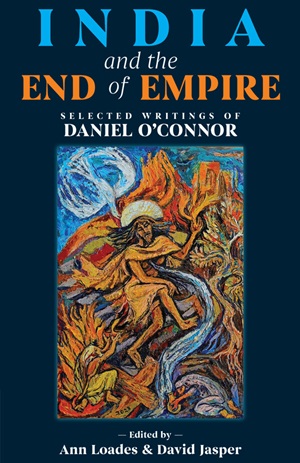 Daniel O’Connor has led a remarkable life as an Anglican priest, scholar, missionary and teacher.
Daniel O’Connor has led a remarkable life as an Anglican priest, scholar, missionary and teacher.
His 10 years as chaplain and lecturer in St Stephen’s College, Delhi and his years as Principal of the College of the Ascension, Selly Oak established him as one of the leading scholars of missionary activity during the time of the British Empire and afterwards.
Identifying closely with post-colonialism his writings on C.F. Andrews and Verrier Elwin provide a rich resource for the history of late imperial and early independent India.
The essays in this book provide an introduction to his many writings, concluding with his magisterial overview of the ‘geography’ of Anglican missions over the centuries.
He wrote about the the overlap between the missionary enterprise and imperialism:
The civility/barbarity dichotomy which marked the Church’s mission in the ‘Empire of Great Britain’ was a persisting fault line in Anglican geography. The terminology of barbarian, savage, heathen, pagan – over against civilized – had a much older and wider European history, but gained a commanding currency throughout the British Empire and the Anglican Church. . . .
The means of civilizing most emphasized in Anglicanism was education, seen as moral training and a preparation for evangelization. The Church’s massive role here usually preceded and often outstripped in scale that of the colonial and imperial authorities, though often funded by official grants-in-aid.
A book review in Church Times begins by noting that “Duncan Dormor [the reviewer] reads about missionaries who abhorred imperialism.” Dormor concludes, “This book provides access to a thoughtful and nuanced perspective on missionary history at exactly the time when the British Empire and its legacies are being debated with fresh vigour.”
- Alexandra Kaloyanides: Baptizing Burma: Religious Change in the Last Buddhist Kingdom (Columbia University Press, 2023)
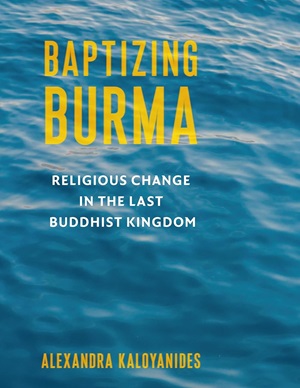 In July 1813, a young American couple from Boston – Adoniram and Ann Judson – arrived in Rangoon to preach the gospel. Celebrated in the Protestant press, which ran dramatic accounts of exotic adventures, the attempt to convert the Burmese met with mixed results.
In July 1813, a young American couple from Boston – Adoniram and Ann Judson – arrived in Rangoon to preach the gospel. Celebrated in the Protestant press, which ran dramatic accounts of exotic adventures, the attempt to convert the Burmese met with mixed results.
Although Burmese Buddhists resisted Christian evangelism, people from minority communities were baptized in large numbers throughout the nineteenth century. American Baptist Christianity was itself transformed in the Buddhist kingdom.
Missionaries who were initially horrified by what they saw as the idolatry of Buddha statues found themselves creating tree shrines and their converts hanging colourful Jesus paintings in their churches.
Baptizing Burma explores the history of how the American Baptist mission to Burma failed to convert the country yet succeeded in transforming its religious landscape.
Alexandra Kaloyanides, Assistant Professor of Religious Studies at the University of North Carolina, examines how the Burmese majority positioned Buddhism to counter Christianity, how marginalized groups took on Baptist identities and how Protestantism was reimagined as a Southeast Asian religion.
She considers a series of holy objects to reveal the mechanics of religious practice in a period of entangled empires – British, Burmese and American. By telling stories of four key things – the sacred book, the school house, the pagoda and the portrait – this book illuminates the histories of Burma’s last kingdom and the unexpected consequences of America’s first overseas mission.
There are quite a number of biographies about the Judsons (Adoniram had three wives; the first two died overseas). Several are good, and the one I read this summer – To the Golden Shore by Courtney Anderson (Judson Press, 1998) – was really quite impressive, and moving.
